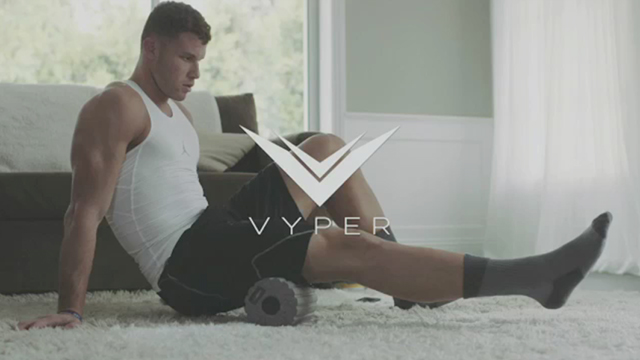By Anthony Katz
Rehabilitation and recovery are two important topics in health and wellness today, and research teams have been examining and testing the newer therapeutic methods that facilitate advanced recovery. Vibration therapy has made improvements in recent years, so we’re sharing two research studies that tested vibration’s effectiveness when it came to delayed onset muscle soreness (DOMS). If you’re interested in how vibration therapy can be utilized in your practice, take a look at each study below.
Study #1: Effect of vibration treatment on symptoms associated with eccentric exercise-induced muscle damage
Lau WY 1, Nosaka K. This study first appeared in the American Journal for Physical Medicine & Rehabilitation August 2011.
What follows is the research abstract – to view the entire study, please click here.
OBJECTIVE:
The aim of this study was to test the hypothesis that vibration treatment reduces delayed-onset muscle soreness and swelling and enhances recovery of muscle function after eccentric exercise.
DESIGN:
A randomized crossover design was used. Fifteen young men performed ten sets of six maximal eccentric contractions of the elbow flexors with the right arm for one occasion and the left arm for the other occasion separated by 4 wks. One arm received a 30-min vibration treatment at 30 mins after and 1, 2, 3, and 4 days after the exercise (treatment group), and the other arm did not receive any treatment (control group). The order of the treatment and control conditions and the use of the dominant and nondominant arms were counterbalanced among subjects. Changes in indirect markers of muscle damage were compared between arms by a two-way repeated-measures analysis of variance.
RESULTS:
Compared with the control group, the treatment group showed significantly (P < 0.05) less development and faster reduction in delayed-onset muscle soreness at 2 to 5 days after exercise. The recovery of range of motion was significantly (P < 0.05) faster for the treatment than for the control group. However, no significant effects on the recovery of muscle strength and serum creatine kinase activity were evident. Immediately after the vibration treatment, a significant (P < 0.05) decrease in the magnitude of delayed-onset muscle soreness and muscle strength and an increase in pressure pain threshold and range of motion were found.
CONCLUSIONS:
These results showed that the vibration treatment was effective for attenuation of delayed-onset muscle soreness and recovery of range of motion after strenuous eccentric exercise but did not affect swelling, recovery of muscle strength, and serum creatine kinase activity.
Study #2: Vibration Therapy in Management of Delayed Onset Muscle Soreness (DOMS)
Zubia Veqarcorresponding author 1 and Shagufta Imtiyaz 2 This article first appeared in the Journal of Clinical Diagnosis Research on June 20, 2014.
What follows is the research abstract – to read the entire study, please click here.
 Both athletic and nonathletic population when subjected to any unaccustomed or unfamiliar exercise will experience pain 24-72 hours post-exercise. This exercise especially eccentric in nature caused primarily by muscle damage is known as delayed-onset muscle soreness (DOMS). This damage is characterized by muscular pain, decreased muscle force production, reduce range of motion and discomfort experienced. DOMS is due to microscopic muscle fiber tears. The presence of DOMS increases risk of injury.
Both athletic and nonathletic population when subjected to any unaccustomed or unfamiliar exercise will experience pain 24-72 hours post-exercise. This exercise especially eccentric in nature caused primarily by muscle damage is known as delayed-onset muscle soreness (DOMS). This damage is characterized by muscular pain, decreased muscle force production, reduce range of motion and discomfort experienced. DOMS is due to microscopic muscle fiber tears. The presence of DOMS increases risk of injury.
A reduced range of motion may lead to the incapability to efficiently absorb the shock that affect physical activity. Alterations to mechanical motion may increase strain placed on soft tissue structures. Reduced force output may signal compensatory recruitment of muscles, thus leading to unaccustomed stress on musculature. Differences in strength ratios may also cause excessive strain on unaccustomed musculature. A range of interventions aimed at decreasing symptoms of DOMS have been proposed. Although voluminous research has been done in this regard, there is little consensus among the practitioners regarding the most effective way of treating DOMS.
Mechanical oscillatory motion provided by vibration therapy. Vibration could represent an effective exercise intervention for enhancing neuromuscular performance in athletes. Vibration has shown effectiveness in flexibility and explosive power. Vibration can apply either local area or whole body vibration. Vibration therapy improves muscular strength, power development, kinesthetic awareness, decreased muscle sore, increased range of motion, and increased blood flow under the skin. VT was effective for reduction of DOMS and regaining full ROM. Application of whole body vibration therapy in post-exercise demonstrates less pressure pain threshold, muscle soreness along with less reduction maximal isometric and isokinetic voluntary strength and lower creatine kinase levels in the blood.
Download the VYPER Foam Rolling Instructional PDF from WebExercises:
Click here to read more about Anthony Katz.
If you are interested in purchasing a Vyper, please CLICK HERE to get special doctor only pricing from MeyerDC.










